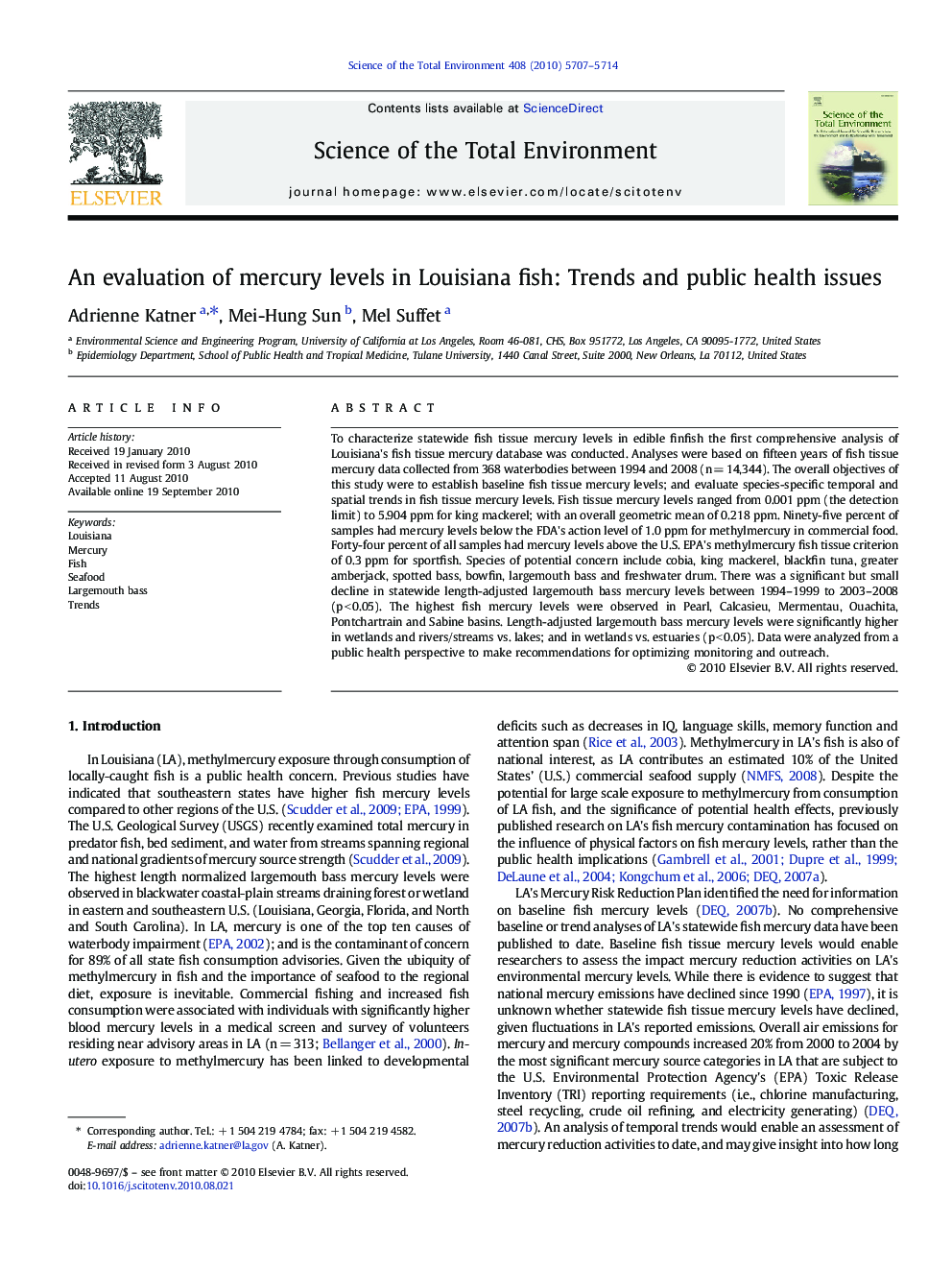| Article ID | Journal | Published Year | Pages | File Type |
|---|---|---|---|---|
| 4431364 | Science of The Total Environment | 2010 | 8 Pages |
To characterize statewide fish tissue mercury levels in edible finfish the first comprehensive analysis of Louisiana's fish tissue mercury database was conducted. Analyses were based on fifteen years of fish tissue mercury data collected from 368 waterbodies between 1994 and 2008 (n = 14,344). The overall objectives of this study were to establish baseline fish tissue mercury levels; and evaluate species-specific temporal and spatial trends in fish tissue mercury levels. Fish tissue mercury levels ranged from 0.001 ppm (the detection limit) to 5.904 ppm for king mackerel; with an overall geometric mean of 0.218 ppm. Ninety-five percent of samples had mercury levels below the FDA's action level of 1.0 ppm for methylmercury in commercial food. Forty-four percent of all samples had mercury levels above the U.S. EPA's methylmercury fish tissue criterion of 0.3 ppm for sportfish. Species of potential concern include cobia, king mackerel, blackfin tuna, greater amberjack, spotted bass, bowfin, largemouth bass and freshwater drum. There was a significant but small decline in statewide length-adjusted largemouth bass mercury levels between 1994–1999 to 2003–2008 (p < 0.05). The highest fish mercury levels were observed in Pearl, Calcasieu, Mermentau, Ouachita, Pontchartrain and Sabine basins. Length-adjusted largemouth bass mercury levels were significantly higher in wetlands and rivers/streams vs. lakes; and in wetlands vs. estuaries (p < 0.05). Data were analyzed from a public health perspective to make recommendations for optimizing monitoring and outreach.
